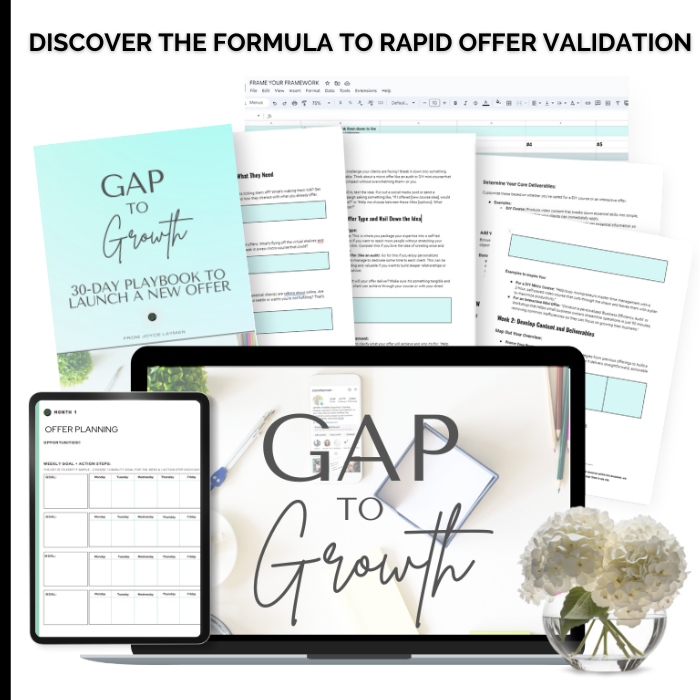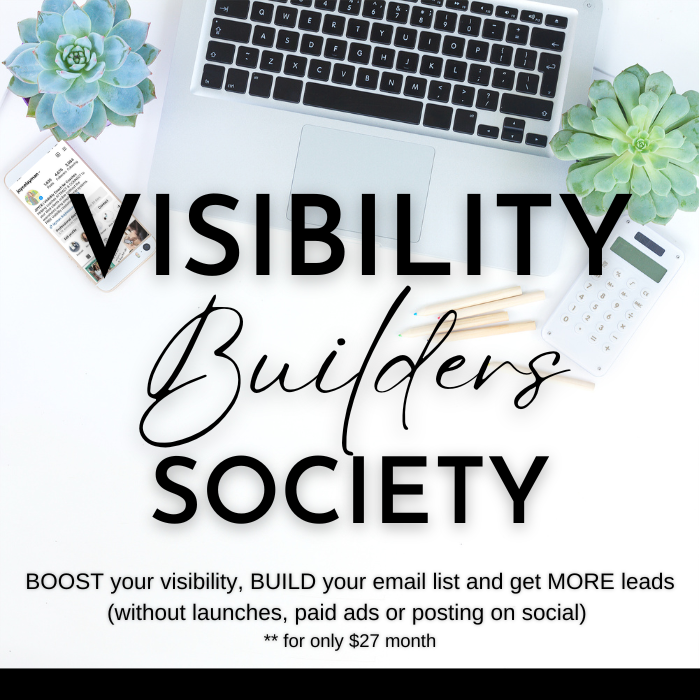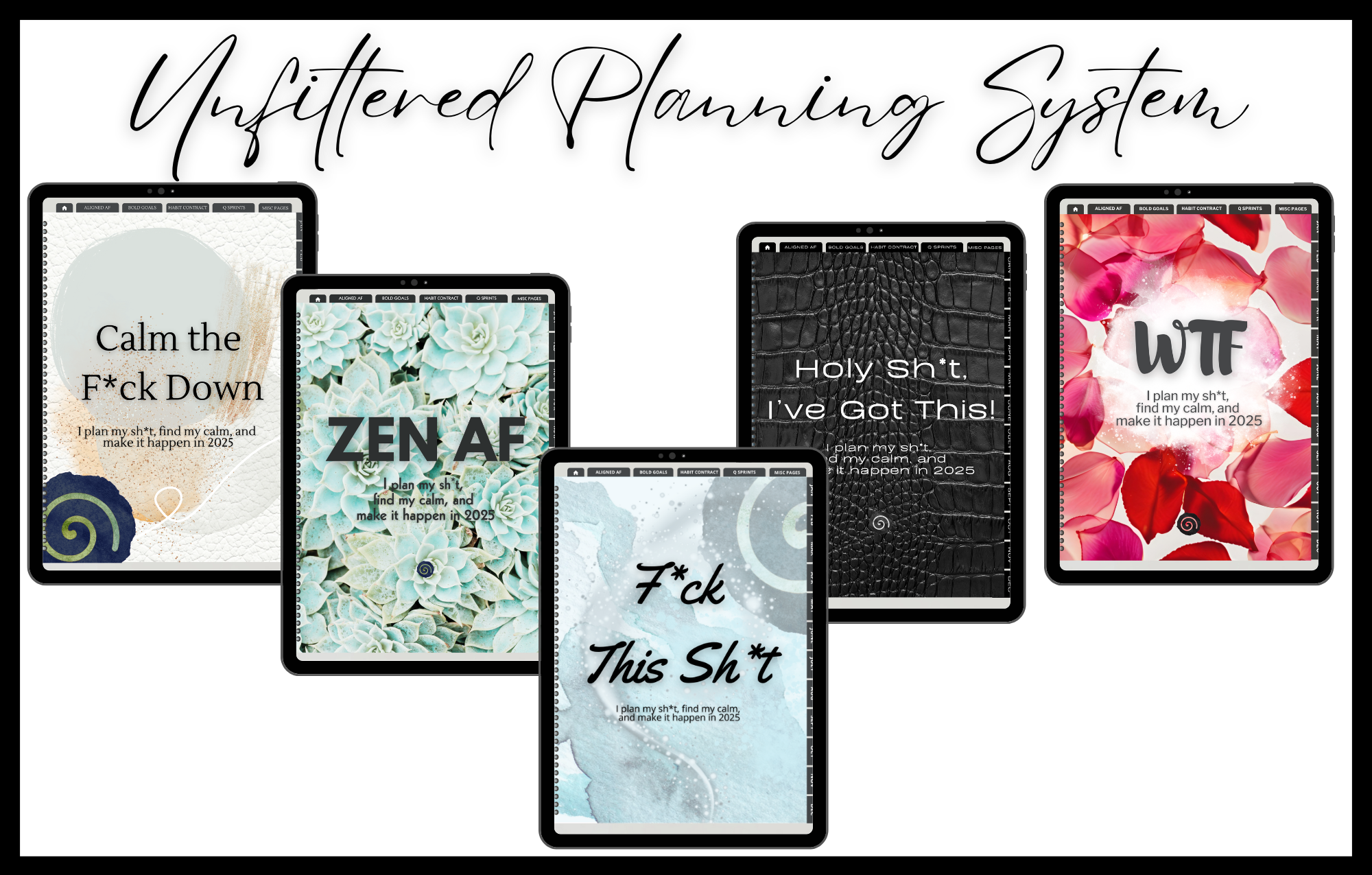In order to have a thriving business that fuels your life and pays you, you can’t skip one essential step: creating a solid business plan.
Most people misunderstand what a business plan is, thinking it’s some complicated 30-page document full of charts and tables meant for investors. This isn’t Shark Tank—but you do need to get clear and specific about what you’re building and how you plan to get there.
The good news? A business plan doesn’t have to be intimidating (or take days to create).
With the right structure, you can create a roadmap that sets you up for success and moves you toward your big goals. So, let’s get into the six essential elements your business plan needs to have power behind your strategy and change the course of your business for the better.
1. Vision: The Big Picture of Your Business Future
The very first step is vision casting. Before you dive into strategies, you need to know what kind of business you’re building and where you want it to take you. Whether you’re new to the online world, transitioning from a corporate role, or starting a side hustle with the goal of eventually running your own business, it’s important to define your ultimate goal.
It’s easy to say, “I want a million-dollar business.” Yes, dream big! But you also need to consider what you want to accomplish and what support you currently have. Defining where you want to go gives you clarity on how to get there.
Define your vision and goals, and then reverse-engineer the strategies that will get you there. If you’re unsure of what your business will look like in the future, it’s time to spend some serious thought here. This step will provide direction for everything else.
2. Mission & Purpose: Why Your Business Exists
Most entrepreneurs understand they need a mission statement, but many small businesses skip this step because they think it’s only for big corporations. However, whether you’re a solo coach or running a larger team, having a clear mission is crucial.
Ask yourself:
- What do you do?
- How do you do it?
- Who do you serve?
- What value do you bring to their lives?
Your mission statement should reflect not only what your business does but also the transformation you provide for your clients. When you think about the future vision of your business, also consider the future of your clients—what does their life look like after you’ve worked with them? If you need more guidance here, Simon Sinek’s TED talk on finding your “why” is a great resource to dive into.
3. Who You Serve and How You Help Them
The number one reason businesses struggle is they don’t deeply understand their clients. It’s not enough to know basic demographics like age, location, or income. You need to get into the psychographics: their values, motivations, and challenges.
Do your homework.
Research your ideal client beyond surface-level data to understand their problems.
Knowing this helps you craft offers that resonate deeply and messaging that connects. This focus allows you to position yourself as the perfect solution to their problems. And remember, when you try to appeal to everyone, you appeal to no one. The clearer your message is, the easier it is for clients to identify that you’re the right fit for them.
4. Profitability: How Your Business Will Make Money
Talking about numbers, especially when you’re new, can feel overwhelming. But numbers tell the story of what’s possible. This section of your plan is all about identifying revenue streams and figuring out how your business will become profitable.
Think about:
- Your pricing strategy: Instead of guessing, calculate how your offers can meet your financial goals.
- Your offer stack: Instead of relying on a single high-ticket offer, consider the power of three—low, mid, and high-ticket offers. This creates more opportunities to engage potential clients at different price points.
Mapping this out gives you clarity on what’s required to hit your revenue goals and removes the guesswork from your strategy.
5. Marketing Strategy: How You’ll Attract Clients
Marketing is all about sharing your message so it reaches the right people. If you’ve worked through the previous steps, you now have a clear message, understand your ideal client, and know the problems you solve. Now it’s time to focus on how you’ll spread that message and attract clients.
The good news? Client attraction doesn’t have to rely on hashtags, fancy graphics, or exhausting social media schedules. Instead, you should focus on online marketing strategies that get you visible where your audience is already spending time.
Here are some of the best online marketing strategies to consider:
- Collaborations: Build relationships through freebie swaps, bundles, or joint ventures.
- Content Creation: Create valuable blog posts, videos, or social media content
- Email Marketing: Focus on growing your email list and nurturing your audience with consistent, engaging emails.
- Free Workshops: Provide value upfront by hosting free workshops where you can pitch your services or products at the end.
- Lead Magnets: Create a free offer (like a checklist or guide) to attract leads and build your email list.
- Guest Speaking: Reach new audiences by speaking at virtual summits, for local organizations, or even doing a podcast interview.
- SEO and Pinterest: Use search engine optimization (SEO) strategies and Pinterest to drive organic traffic to your website.
By focusing on these online marketing strategies, you’ll be able to attract the right clients, grow your audience, and scale your business without burning out.
6. Sales Strategy: How You’ll Convert Leads Into Clients
Marketing is only one piece of the puzzle—once you’ve attracted potential clients, you need a sales strategy to convert them into paying customers. Unless you have a huge email list, social following, and ad budget, sales usually involve direct communication with potential clients.
Consider how you’ll nurture leads and turn them into clients. Will you use social media to drive traffic to a lead magnet, host a free workshop with a pitch at the end, run a challenge, or leverage collaboration opportunities like bundles or summits to quickly grow your email list? The key is to keep your strategy simple and focused on connection, rather than overwhelm.
It’s important to remember that selling doesn’t have to be slimy. Instead, think of it as relationship building.
Your goal is to figure out where potential clients are in their buyer’s journey. Are they just discovering they have a problem, or are they ready to invest in a solution? On average, only 3% of your warm audience is ready to buy at any given time. So, how will you track who you’re talking to and where they are in the process?
Your sales process doesn’t need to be complicated, but it does need to exist. Without a way to move people through the buyer’s journey, even the best marketing will fall flat. Build a system for follow-up and nurturing, and ensure that you’re creating relationships that naturally lead to sales.
With these six foundational steps—vision, mission, ideal client profile, profitability plan, marketing strategy, and sales strategy—you can craft a business plan that doesn’t just sit on a shelf, but drives your actions and fuels your business growth. The clearer you get on these steps, the more confident and intentional your decisions will be.
If you’re ready to turn your big ideas into a business you love while making a bigger impact, take these steps and start creating the business plan that will lead you there.
>>>>>>>>>>>>>>>>>>
Ready to amplify your online authority AND add hundreds of subscribers to your email list and get more leads (in a month) without launches, Facebook ads, or relying on social media…
Join the Visibility Builders Society! The system works even if you have a small audience or haven’t created an offer yet!








